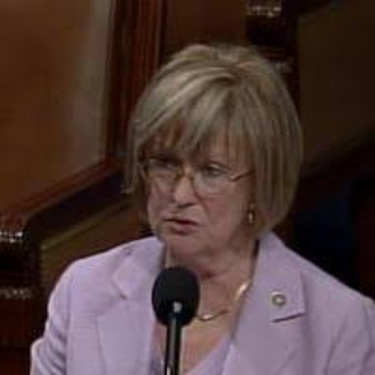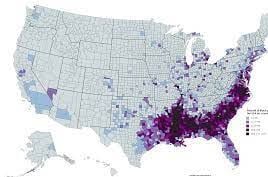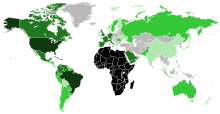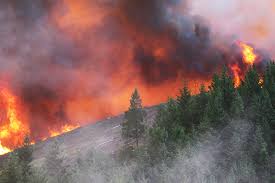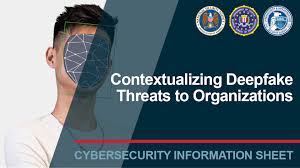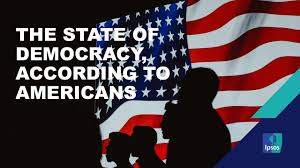Welcome
Oji African American Diaspora Blog
"Be Aware of The Evils of The Devil - But Learn & Follow The Commandments of Almighty God"
African American Diaspora
World African Diasporas
Pew Research Cites 47.9 Million African Americans in the United States African American Diaspora in 2022 Including 5.1 Million Foreign-Born Black Americans (Pew Research Center)
African Diasporas are World-Wide Communities Inhabited by Descendants of Africans In Which, Over 200-Million People of African Descent Live Outside of Africa (University of Pittsburg)
American's Worries
American Democracy
U.S. Democracy in Serious Threat Say Americans
Whites' Economic Gap Over Others is Immense
to
International Conflicts
Ukraine: Displacement & Humanitarian Crisis
Older Adults in The U.S.
African American News
Many Americans express concern that the United States military is prioritizing social policy initiatives over core warfighting capabilities and readiness. This perception, fueled by a perceived "culture war" within the military, leads to concerns about the military's ability to deter and respond effectively to world-wide threats. The "culture war" are political divisions in the broader society, that are being increasingly reflected within the armed forces. This "culture war" is seen as disagreements over racial and ethnic diversity and inclusion initiatives, LBGTQ and female integration in combat roles, and interpretation of military traditions and values. Some critics suggest that focusing on social issues distracts from the primary mission of defending the nation. Many Americans express concern that the military's focus on social policy agendas may detract from its primary mission of ensuring combat effectiveness. However, the U.S. military continues to be widely respected by the American public, although there's concern that this trust could be eroded if the public perceives a shift in priorities away from combat readiness to social issue readiness. In an October 2024, Pew Research Survey, 79% of responding U.S. adults, said they have confidence in the military to act in the public’s best interests. That included 30% who had a great deal of confidence and 48% who had a fair amount of confidence. Public trust in the military has ebbed and flowed in response to major events and societal shifts. In the aftermath of the Vietnam War, widespread disillusionment left military confidence at an all time low. Yet moments of triumph, such as Operation Desert Storm in 1991, and the September 11 responses represent high water mark, with the military hailed as the nation’s protector in a time of unprecedented crisis. In response to the Sept. 11, 2001 attacks, the U.S. attacked with a multi-faceted approach (Wikipedia), focusing on national security, military action, and international cooperation. This included launching investigations, enacting new legislation, initiating military operations, and bolstering homeland security measures. By 2009, confidence in the armed forces had climbed to an impressive 82%, according to Gallup polling. However, the optimism of the post-9/11 era has since eroded, with recent years characterized by a significant decline in public trust. The reasons for this decline are multifaceted and deeply interconnected. High-profile scandals involving misconduct among military leaders have cast a shadow over the institution’s integrity. Instances of racial and ethical discrimination, resource misuse, and sexual harassment have eroded confidence in military leadership, tarnishing its image as a bastion of professionalism. Moreover, the politicization of the armed forces has further weakened public trust. Traditionally, the military has maintained a staunchly apolitical stance, but recent events have blurred this critical boundary. The 2020 deployment of the National Guard to 28-states during widespread protests of the death oof George Floyd, sparked heated debates about the U.S. military’s role in domestic affairs and its ability to remain impartial. Such episodes contribute to the perception that the military is increasingly entangled in political controversies, putting at risk its reputation for neutrality and undermining its broader mission (Modern War Institute). Defense Secretary Pete Hegseth on May 20, 2025, ordered West Point and other military academies to purge their libraries of books covering "divisive concepts" such as race, gender, and the treatment of Native Americans (The Week). The directive is part of a broader push to remove content related to Diversity, Equity, and Inclusion (DEI) from military institutions, following President Trump's stance against what he deems as "divisive" and "un-American" ideologies. Graham Parsons, former West Point Philosophy Professor stated: Hegseth's censorship requires professors "to indoctrinate, not educate." The claim that historical realities like racism and sexism "are too dangerous even to be contemplated" by cadets is absurd. So is telling future military leaders they can't "question their own government." Laura Jedeed in The Nation wrote "Hegseth is keeping his job for one reason: Trump has long fantasized about invoking the Insurrection Act and sending the army into the streets to round up migrants or protesters. Trump knows that many career military officers believe they serve the Constitution, not an authoritarian president, and might say "no" to an illegal order (The Week). On June 7, 2025, President Trump authorized 4,000 U.S. National Guards and 700 U.S Marines be sent to Los Angeles, California over immigration protests and deportations (NPR News).
The socioeconomic environment of children and adolescent neighborhoods significantly impacts their development and well-being. Neighborhood characteristics, including poverty levels, access to resources, and safety, can influence cognitive function, physical and mental health, academic achievement, and even brain development. . Neighborhood Socioeconomic status (SES) is a key construct for understanding environmental health and promoting environmental justice. Low Socioeconomic Status neighborhoods are disproportionately affected by air pollution and environmental toxins, and low Socioeconomic Status persons and residents of low Socioeconomic Status neighborhoods are especially vulnerable to the effects of these environmental stressors. Neighborhoods define the socioeconomic, physical, and political contexts that mediate environmental exposures and children and adolescent’s health-related behaviors and outcomes. Recent studies show that the longer children and adolescents resides in a higher Socioeconomic status neighborhood, regardless of their household Socioeconomic status, the more significant the impact on their health outcomes. Therefore, neighborhoods represent a unique geographic unit that captures physical and built exposures, socioeconomic positioning, and social interactions between resident children and adolescents (PubMed Central). Family income also affects the quality of the neighborhoods in which children and adolescents grow up. Compared with low-poverty neighborhoods, high-poverty neighborhoods have lower availability of high-quality public and private services such as parks, child care centers and preschools, community centers, and health care providers, as well as fewer social supports and less effective social networks (McLoyd 1998). Conversely, high-poverty neighborhoods are more likely to be physically deteriorated and to have more crime and street violence, greater availability of illegal drugs, and more negative peer influences and adult role models (McLoyd 1998; National Research Council 1995). These characteristics of high-poverty neighborhoods may have deleterious consequences for the cognitive functioning, socialization, physical health, emotional functioning, and academic achievement of children and adolescents (e.g., Ellen and Turner 1997). Family income also has a profound influence on the educational opportunities available to adolescents and on their chances of educational success. Due to residential stratification and segregation, low-income students usually attend schools with lower funding levels, which result in reduced availability of textbooks, other instructional materials, laboratory equipment, library books, other educational resources; low-level curricula; and less-qualified teachers and administrators (e.g., Kozol 1991; Oakes 1990; Ingersoll 1999). The effects of concentrated poverty in schools may include disciplinary problems and chaotic learning environments (National Library of Medicine). Harvard researcher Raj Chetty and colleagues' research has found that where children live during their formative years determines their chances of success as adults. Their particularly research studies on the "Moving to Opportunity" program and the Opportunity Atlas, highlights the strong link between neighborhood characteristics and long-term outcomes. Children who move to higher-opportunity neighborhoods tend to have better adult outcomes, such as higher earnings and educational attainment. In the "Moving to Opportunity" study, involving families using housing vouchers to move from high-poverty to lower-poverty neighborhoods, research found that children who moved had significantly higher incomes as adults compared to those who remained in high-poverty areas. The Opportunity Atlas tool, developed by Chetty's team, maps economic mobility across the United States, revealing significant variations in upward mobility based on neighborhood, indicating that factors like racial and income segregation, income inequality, school quality, crime rates, and family structure in a neighborhood can influence a child's future success. According to the International Monetary Fund (IMF), research also suggests that the earlier a child is exposed to a higher-opportunity neighborhood, the greater the positive impact on their future outcomes. Raj Chetty, working with Harvard’s Nathaniel Hendren and Harvard’s Lawrence Katz, revisited the "Moving to Opportunity" study, but focused on children under the age of 13. Linking that data with federal tax data, they confirmed the result of the earlier quasi experiment. Children who moved to lower-poverty areas ended up earning 31% more than those who didn’t. What’s more, they were more likely to attend college and live in better neighborhoods and less likely to be single parents (PublicPlace).
According to a new NPR/PBS News/Marist poll, 3/4 of Americans say democracy is under serious threat, and nearly 3/4 of those Americans also see politically motivated violence as a major problem. These findings come at a time of great political volatility, coming In the midst of Donald Trump's second term as president, the country is polarized and sharply divided. The survey poll finds that the United States is grappling with what it means to be American, who is essential to the American story, who belongs in America, who doesn't belong in America, and which direction the country should take, all while Americans are expressing very little faith in its political leadership. There was no meaningful difference by race, income or education, but those who most see democracy under serious threat were people who voted for former Vice President Kamala Harris. White women (85%), with degrees and White women (81%) without degrees said the threat was serious, compared to White men (70%) with degrees and White men (67%) without degrees who believe Democracy is under serious threat. The overwhelming majority (76%) of respondents said democracy is under serious threat. Political majorities of Democrats (89%), Republicans (57%), and independents (80%) say there is a threat to the future of democracy. President Trump’s job approval rating among Americans (43%) is little changed from 42% in April 2025. Americans (52%) disapprove of President Trump’s job performance, while 29% of Americans strongly approve of Trump’s approach to his job, and 43% strongly disapprove. Americans nationally (43%) approve of how he is handling immigration, and 52% disapprove. 41% of Americans approve of the way President Trump is dealing with foreign policy, but 52% of residents nationally disapprove. 39% approve of the president’s handling of the economy. 53% disapprove. A significant majority (73%) of Americans said they see politically motivated violence as a major problem. There was some division by race and age, with majorities of Latino/Hispanic, African American and younger voters seeing politically motivated violence as a major problem. They were less likely to say so than Whites and older voters. Again White women (83%) with college degrees were most likely to say political violence was a major problem, followed closely by those 60 and older (81%) (NPR News).
Columbia: Displacement & Humanitarian Crisis
African American buying power in the United States is projected to reach $1.98 trillion, representing the significant economic influence of the African American community and reflecting a steady increase in its financial strength. This projected $1.98 trillion buying power signifies a substantial economic force within the United States, and is the result of various factors, including the growth of the Black population, increased access to education and higher-paying jobs, and a rise in entrepreneurial opportunities. This growing financial strength is part of a broader trend observed over recent decades, as the African American population, estimated to be around 48.3 million, has not only grown but it has also gained greater access to education, higher-paying jobs, and entrepreneurship opportunities. This growing financial strength is not just about the sheer size of the potential market, but also about the influence Black consumers have on various industries. However, the full impact of this buying power depends on where and how it is spent, with ongoing efforts to direct more dollars toward Black-owned businesses in order to strengthen community wealth. The Beauty and Personal Care Industry remains one of the sectors most significantly shaped by the Black Beauty consumer (Nielson Consumer)), spending. Black Americans are trendsetters in haircare, skincare, and cosmetics, collectively spending billions each year and influencing global markets. Black consumers account for a disproportionate share of spending in these categories. There's a growing demand for brands that offer diverse shade ranges in makeup, and cater to different hair textures. Black-owned beauty brands are experiencing growth and are often favored by Black consumers for their perceived understanding of their needs and preferences. Another major area of influence is media and entertainment. African Americans are leading consumers of streaming services, music, and television, with a cultural influence that far exceeds their population size. African American artistic endeavors and media consumption help drive the $720 Billion media and entertainment economy. Streaming platforms like Netflix, Hulu, and Spotify have increasingly incorporated Black-led productions and created content to appeal to this audience. Black consumers also dominate spending in digital content, gaming, and social media engagement, making African Americans a coveted demographic for advertisers and content creators. African-American consumers are more relevant than ever in today’s ever-shifting entertainment market. The fashion industry also benefits significantly from Black spending power driven by their substantial buying power, cultural trendsetting, and growing support for Black-owned brands. Black American consumers will spend $70 billion on apparel (Retail Boss), and footwear by 2030. Black consumers are key drivers of trends in footwear, apparel, and accessories, often dictating styles that later become mainstream. Designer brands, athletic wear companies, and luxury labels have increasingly recognized the importance of the Black demographic, not only for their direct spending but also for their cultural influence on global fashion trends. From streetwear to high fashion, the impact of Black consumers is evident (Black Wall Street).
Impact of Gun Violence in The United States
Gun violence in the United States has a profound and multifaceted impact, leading to significant injuries and the deaths of 48,000 people annually; widespread trauma, and substantial economic consequences. Beyond the immediate casualties, gun violence creates a climate of fear and insecurity, disproportionately affecting marginalized communities and impacting mental health and well-being. Exposure to gun violence can lead to depression, PTSD, anxiety, and other mental health issues. The constant threat of gun violence also creates a climate of fear and insecurity, impacting communities and individual well-being. Gun violence disproportionately affects marginalized communities, particularly Black and Latino communities, and can exacerbate existing social inequalities. It can also lead to decreased property values, reduced business activity, and urban flight. Everytown Research, shows that African American, Indigenous, Latino/ Hispanic and LBGTQ people experience higher rates of gun homicides and fatal shootings by police than do Whites. Additionally, gun homicides perpetrated by intimate partners disproportionately impact African American and Indigenous women. Structural disadvantages in marginalized communities are exacerbated by generations of systemic racism, discriminatory policies, and patterns of police violence, which dramatically reduce public confidence in government institutions and law enforcement. This distrust can make low-income community members less likely to report victimization, which can hamper efforts to solve crimes, create barriers to accessing services, including victim compensation. According to KFF Health News, the United States has experienced a sharp increase in firearm mortality among youth, as from 2013 to 2023, nearly 21,000 children ages 17 and younger died by firearms. In 2023, the rate of firearm deaths among African American youth was 12 people per 100,000, substantially higher than any other racial and ethnic group and over four times higher than White youth. Although firearm death rates for American Indian and Alaska Native (AIAN) youth fluctuated over the same period, they still remained higher than the rates of Whites, Hispanics, and Asians throughout the period. The new Trump Administration has revoked multiple gun safety initiatives in the interest of preserving Second Amendment rights. These initiatives include dismantling the School Safety Committee, an Executive Order to review and revise firearm regulations by the Bureau of Alcohol, Tobacco, and Firearms, that may infringe on Second Amendment rights, and the removal of the former Surgeon General’s advisory that identified gun violence as a public health crisis (KFF Health News).
Gun Violence in United States
African News
A Nation Built With Its People All
Equal, That They Are Endowed, By Their
Creator, With Certain Unalienable Rights
International Holiday
Climate change is a significant factor contributing to increased wildfire frequency and severity in the United States. Warmer temperatures and drier conditions are extending the length of fire seasons in many regions. These warmer temperatures and drier conditions impact vegetation, making vegetation more susceptible to drying out and becoming fuel for fires. Additionally, warming temperatures, drier conditions, and dried vegetation can lead to larger, more intense wildfires that are harder to control and cause greater damage. Natural factors like lightning strikes, can ignite wildfires, and these wildfires may become more frequent in some areas due to climate change. However, humans are exacerbating the wildfire problem, examples are: 1) Improperly extinguished, or carelessly built campfires; 2) Burning debris, trash, leaves, and agricultural waste, without proper precautions; 3) Sparks from dragging trailer chains or faulty exhaust systems), heavy equipment, and other machinery can ignite dry vegetation; 4) Discarded cigarettes and other smoking materials, especially during dry conditions, pose a serious fire risk; 5) Deliberately or maliciously setting fires is a serious crime and a cause of wildfires. Wildfires have the potential to harm property, livelihoods, and human health. Fire-related threats are increasing, especially as more people live in and near forests, grasslands, and other natural areas. According to the National Oceanic and Atmospheric Administration, between 1980 and 2023, the United States had 22-wildfire events that individually caused more than $1 billion in damage. Over the past few decades, the U.S. has routinely spent more than $1 billion per year to fight wildfires, but $3.5 billion in 2022. Even in communities downwind, wildfire smoke is directly linked to poor air quality that can lead to health effects and costs to society, including emergency department visits, hospital admissions, and respiratory ailment deaths. According to Wikipedia, in 2024, there were 64,897 wildfires in the U.S. that burned 8,924,884 acres. So far in 2025, there have been 29 people killed, and 44 firefighters (U.S. Fire Administration). Along with societal impacts, wildfires also affect the Earth’s climate. Forests contain large amounts of carbon. When forests burn, they immediately release carbon dioxide into the atmosphere, which in turn contributes to climate change. After burning, forests also release carbon dioxide more gradually through decomposition (Environmental Protection Agency). As of July 17, 2025, wildfires have occurred or are occurring in twelve U.S. states: 1) Alaska, nearly 200 wildfires are currently being monitored across the state; 2) Oregon, seven large wildfires continue to burn throughout the state; 3) Washington, there have been 8-wildfires in the state, all contained; 4) California, As of July 15, 2025, 4,195 fires have burned 201,295 acres across the state; 5) Utah, multiple wildfires are presently burning, uncontained, across the state; 6) Nevada, ten wildfires have began in the state, with seven of them still active; 7) Colorado, wildfires continue to burn across the state as hot, dry, conditions persist; 8) Idaho, although fewer acres have burned than last year, the state has reported 139 wildfires so far this year; 9) New Mexico, as extreme drought gripped parts of New Mexico in June 2025, firefighters battled large wildfires in the southwestern part of the state; 10) Arizona, lightning ignited two wildfires near the Grand Canyon in July 2025 that grew to become large and disruptive; 11) Montana, the Banana Lake wildfire, a large western Montana wildfire is burning weeks earlier than the 2024 fire season, 12) North Dakota, wildfires burn thousands of acres on tribal lands in North Dakota (Environmental Protection Agency) Following wildfires, particularly large and frequent ones, ecosystems can be devastated, wildlife harmed and potentially leading to the local or complete extinction of key species like the California quail and mountain lion. The destruction of vegetation leaves, and soil exposed and vulnerable, increases the risk of erosion and mudslides, especially in areas experiencing heavy rainfall after wildfires. Runoff from burned areas can carry pollutants like organic carbon and phosphorus into water sources, contaminating drinking water and harming aquatic life. According to the National Institutes of Health (NIH), wildfire smoke contains particulate matter and toxic gases that can exacerbate existing conditions and cause new respiratory and cardiovascular problems, leading to increased healthcare utilization. Wildfires often disproportionately affect marginalized communities, including the elderly, low-income individuals, and those with pre-existing health conditions.
Drugs & Substance Abuse
PolySubstance Abuse is a Major Heath Concern in U.S.
The U.S. Census Bureau projected the United States human population to be 335,893,238, on January 1, 2024 - The U.S. is comprised of a mosaic of cultural diversity, with 40% of its people identifying as racial or ethnic minorities: White, 60.1%; Hispanic, 18.5%; Black, 12.2%; Asian, 5.6%; Multiple Races, 2.8%; American Indian/Alaska Native, 0.7%; Native Hawaiian/Other Pacific Islanders: 0.2% - Visualizing the U.S. Population by Race
Sudan: World's Worst Humanitarian Crisis
Sudan is currently experiencing the world's largest humanitarian crisis and displacement crisis, with more than 12-million people being internally displaced, and nearly 4-million Sudanese fleeing to neighboring countries. Many of the people displaced are women and children. Egypt is hosting the largest number of Sudanese refugees (1.5 million), followed by Chad (773,662), South Sudan (349,935), Libya (256,000), Uganda (72,125) and Ethiopia (43,159). In South Sudan, most of those arriving are returning nationals (744,412) who had been living in Sudan as refugees. Without a resolution to the crisis, hundreds of thousands more people will be compelled to flee in search of refuge and basic assistance. The humanitarian and displacement crisis is largely due to the ongoing conflict, which escalated in April 2023, between the Sudanese Armed Forces and the Rapid Support Forces. This conflict exacerbated many of Sudan’s existing challenges, including ongoing conflicts, disease outbreaks, economic and political instability and climate emergencies. Prior to the current conflict, Sudan had already been grappling with violence and displacement since the onset of the Darfur crisis in 2003. Sudan was already home to more than 1-million refugees, the second-highest refugee population in Africa. The humanitarian situation in Sudan has deteriorated, and in August 2024, the Famine Review Committee officially confirmed famine in the Darfur region of Sudan. This famine impacts some of the most vulnerable people in the country, including internally displaced people living in Zamzam IDP camp. On April 14, 2025, the United Nations reported that fighting in Darfur, home of Zamzam Refugee Camp, has forced some 400,000 people to flee the region's largest camp after the paramilitary Rapid Support Forces (RSF) took control, Meanwhile, millions more are at risk of facing famine throughout Sudan. Half of Sudan’s population, some 25-million people, need humanitarian assistance and protection. The country is facing extreme shortages of food, water, medicine and fuel, with more than 25.6-million Sudanese facing acute food insecurity, including 8.5 million of them at emergency levels. The ongoing humanitarian crisis in Sudan is having a devastating impact on women and children. According to UN estimates, even before fighting broke, more than 3-million women and girls in Sudan were at risk of gender-based violence, including intimate-partner violence. Filippo Grandi, UN High Commissioner for Refugees says: "UN teams in the region describe horrific ordeals being faced by forcibly displaced women and girls when fleeing Sudan." Attacks on healthcare facilities, equipment and workers are further depriving women and girls of lifesaving care, with pregnant women hardest hit, according to the World Health Organization and UNFPA. Nearly three quarters of health facilities are out of service and diseases including cholera, measles and malaria are spreading at a time when two thirds of the population lack access to health care. According to UNICEF, the UN agency for children, Sudan is the world’s largest child displacement crisis. The conflict has deprived millions of Sudanese children of an education, with more than 90% of the country's 19-million school-age children having no access to formal education. (USA for UNHCR)
International Events That Create Atrocities & Human Suffering
Dispersion of African Americans in U.S.
Dispersion of African People Across World
According to HUD User (gov.), in 2024, approximately 146,150 adults aged 55 and older were experiencing homelessness in the United States, 20% of the total homeless population. According to the United States Interagency Council on Homelessness (.gov.), this number of senior adults includes individuals experiencing homelessness for the first time, due to traumatic events like job loss, health issues, fixed incomes, rising housing costs, and lack of age-appropriate affordable housing. Many older adults are unsheltered, meaning they live in places not meant for human habitation. For older adults experiencing homelessness, transitioning to safe, stable housing often involves a multi-faceted approach that includes identifying suitable housing options, addressing specific health and functional needs, and connecting them with supportive services. Programs like Permanent Supportive Housing (PSH), provides long-term rental subsidies and Intensive Case Management Services (ICMS) to individuals who have experienced chronic homelessness and live with disabilities, chronic medical conditions, and/or behavioral health conditions. These housing may include licensed board and care placements, adult residential facilities, or residential care facilities for older adults. There are also collaborations between Area Agencies on Aging (AAAs), are public or private nonprofit agencies designated by a state to address the needs and concerns of older adults and their caregivers by providing information and resources to support their independence and well-being to help them age in place. AAAs focus on serving older adults and people with disabilities, providing services like transportation, meals, and caregiver support, and increasingly expanding into housing and homelessness prevention. Continuums of Care (CoCs), these organizations specialize in addressing homelessness across the lifespan and connect individuals with various housing and support services, including emergency shelters, transitional housing, and permanent supportive housing. Kim Hilton, from Montana, was one of tens of thousands of seniors who became homeless for the first time in 2022. A dramatic increase in the number of homeless seniors nationwide is overwhelming services for homeless people. According to researcher Dennis Culhane, the number of homeless people over 65 jumped by a little over a third between 2019 and 2022, and by 2022, there were about 250,000 people over 55-years that were unhoused. What researchers and advocates call the "gray wave" of homeless seniors, is the growing homelessness among senior citizens, driven by factors like rising rents, inflation, and lack of affordable housing, who are overwhelming service providers trying to help. Wendy Wilson, a case manager at Montana's ASSIST, a non-profit agency that helps senior residents, is seeing the gray wave coming first hand. Wilson is struggling to meet their medical needs. In the past, that meant helping them get free meals or finding a ride to the doctor's office. But increasingly, she is helping older people like Hilton find housing. But Hilton also had medical issues. The shelter found for had no medical care and he was sent to the ER. The doctor who treated Hilton discovered he had developed pressure wounds from sitting for months in the same position in his truck. Because of the neuropathy in his limbs from his diabetes, Hilton couldn't feel the pain. Those wounds never healed and became infected. Subsequently, Hilton had to have one leg amputated, and then the other leg amputated as well. Returning to the shelter in a wheelchair wasn't an option, as there were no shelter staff or medical personnel available to help with his basic needs. Wilson secured one of the few slots in a Medicaid program that helps pay for assisted living for Hilton, but it can take a year or more for units to open. So Wilson crossed her fingers that Hilton would get lucky. Caitlyn Synovec with the National Healthcare for the Homeless Council, said many seniors across the country are stuck playing the same dangerous waiting game. "Sometimes they can't be safely served in a shelter because they have issues with incontinence or cognition. Then they're more likely to be back on the streets and their conditions will worsen quite a bit." Communities are looking for solutions. To serve aging people with complex medical needs, homeless shelters for seniors are cropping up in some cities like Salt Lake City, Utah and Ft. Lauderdale, Florida. But that's not enough, according to Caitlyn Synovec, "The real solution is building more affordable housing so older Americans don't become homeless in the first place (Texas Public Radio).
U.S. National Holiday
International Conflicts
Socioeconomics of Children & Adolescent Neighborhoods
Climate Change's Drier Hotter Temperatures Increase Wildfires
U.S. Children & Adolescents
Wildfire's Air Pollution Can Cause Severe Health Risks
World Senior Citizen's Day dates to 1988, when it was officially founded by former United States President Ronald Reagan, who had signed on August 19, 1988, Proclamation 5847. The proclamation stated: "Throughout our history, older people have achieved much for our families, our communities, and our country. That remains true today, and gives us ample reason to reserve a special day in honor of the senior citizens who mean so much to our land. With improved health care and more years of productivity, older citizens are reinforcing their historical roles as leaders and as links with our patrimony and sense of purpose as individuals and as a Nation. Many older people are embarking on second careers, giving younger Americans a fine example of responsibility, resourcefulness, competence, and determination. And more than 4.5 million senior citizens are serving as volunteers in various programs and projects that benefit every sector of society. Wherever the need exists, older people are making their presence felt, for their own good and that of others. For all they have achieved throughout life and for all they continue to accomplish, we owe older citizens our thanks and a heartfelt salute. We can best demonstrate our gratitude and esteem by making sure that our communities are good places in which to mature and grow older, places in which older people can participate to the fullest and can find the encouragement, acceptance, assistance, and services they need to continue to lead lives of independence and dignity. (The American Presiidency Project) President Reagan's words have withstood the test of time and are now, over 30 years later, more important than ever as older people are leading more productive lives. Reagan himself set an example for everyone, becoming te oldest person to be elected president, doing so at the age of 69-years old, and living till the ripe old age of 93. The slogan for Senior Ciitizens Day: "We ought to respect our senior citizens because they are elder to us and also because they are a plethora of knowledge, wise, and they have seen life from the angles we will be leading to." We celebrate with various events and activities that are organized on Senior Citizens Day to raise awareness of supporting older people and recognizing their achievements. Some people raise awareness through social media and news stories, while others organize special community gatherings inviting senior citizens, their families, friends and volunteers. Some businesses give special discounts or deals to senior citizens on or around the third Sunday of August. Make Celebrating Seniors a Meaningful Habit: Listen to their Stories with Full Attention; Write Thank-You Letters for special contributions; Offer physical affection and presence; provide the practical help they need; Share senior citizens wisdom with others; Create memories together, and Include senior citizens in current events and decisions.
United States of America
Photo: Judy Gail Biggert- American Politician, Attorney & Former United States Representative
Racial & Ethnic Population of United States
Day of World's Indigenous Peoples August 9, 2025
Quote: Judy Gail Biggert - American Politician, Attorney & Former United States Representative
Finding Housing For Homeless Seniors Takes Luck
African American $1.98 Trillion Buying Power in 2025
Colombia is currently facing a severe humanitarian crisis marked by widespread displacement, making it one of the largest internally displaced populations globally, with millions forced to flee their homes due to conflict and violence. Escalating violence between armed groups, including the National Liberation Army (InSight Crime), and factions of the Revolutionary Armed Forces of Colombia, has led to mass displacement, particularly in regions like Catatumbo. According to the latest census by the Norte de Santander Local Coordination Team, which is updated periodically, there are 46,500 children affected by the conflict in Catatumbo, along with 962 indigenous people and 4,737 migrants and refugees. Intensification of armed conflict in the Colombian region of Catatumbo, on the border with Venezuela, has triggered a major humanitarian crisis, leading to the largest displacement of people recorded in the country in 28- years. It is estimated that 27,381 people face mobility restrictions or are at risk of confinement, and 8,668 are unable to leave their homes or shelters. Among the most affected groups are migrants, children and adolescents, women and girls, who are increasingly exposed to gender-based violence, and the indigenous communities of Barí people. The mountainous region of Catatumbo and home of the Barí people, located between Colombia’s Eastern Cordillera and Venezuela’s Lake Maracaibo, is rich in natural resources and strategically positioned along the border, making it historically one of the most affected by Colombia’s armed conflict involving non-state armed groups. The recent escalation of violence has forced tens of thousands of people to migrate and confined thousands more, overwhelming healthcare systems and increasing the risk of a food crisis, as accessing and distributing food in this context is extremely difficult. Six decades of armed conflict have left Colombia facing the most prolonged and serious humanitarian crisis in the Americas. Millions of people have been forcibly displaced, along with an unprecedented number of people from neighboring Venezuela who are refugees in Columbia. Given the massive displacement, it is urgent to improve and strengthen shelters, which are currently insufficient and inadequate. Infrastructure improvements are needed to mitigate overcrowding, reduce the impact of environmental hazards, and ensure security. The lack of lighting and reliable facilities further increases exposure to gender-based violence, abuse, conflicts, and theft. Additionally, reaching the thousands of people who remain isolated or facilitating their safe mobility is also critical. Amid this crisis, medical care, essential medicines, first-aid kits for confined populations, and educational support are urgently needed, Action Against Hunger is focusing its efforts on providing nutritional assistance and ensuring access to water, sanitation, and hygiene, critical to preventing food insecurity and the spread of waterborne diseases, which are exacerbated by overwhelmed health facilities and inadequate sewage systems (Action Against Hunger).
Trump Send U.S. Marines & National Guard For Duty in LA
Defending United States Against DeepFake Threats
Deepfake technology, the leveraging of Artificial Intelligence and machine learning, has advanced rapidly, posing significant threats to individuals, businesses, and government entities in the United States. Deepfake technology (Wikipedia), refers to the use of artificial intelligence (AI) to create realistic, but fabricated, videos, images, or audio recordings that convincingly impersonate real people. These manipulations can make it appear as though someone said or did something they never did, raising concerns about misinformation, fraud, and potential harm. Although the act of creating fake content is not new, however, deepfakes uniquely leverage machine learning (statistical algorithms that can learn from data and generalize to unseen data, and then perform tasks without explicit instructions) and artificial intelligence techniques, including facial recognition algorithms and artificial neural networks (machine learning, a computational model inspired by the structure and functions of biological neural networks) such as variational autoencoders (VAEs) and generative adversarial networks (GANs). In turn, the field of image forensics develops techniques to detect manipulated images. Deepfakes have garnered widespread attention for their potential use in creating child sexual abuse material, celebrity pornographic videos, revenge porn, fake news, hoaxes, and financial fraud. Protecting against these attacks requires a multi-layered approach combining technological solutions, education, and vigilance (Wikipedia). The National Security Agency (NSA), the Federal Bureau of Investigation (FBI) and the Cybersecurity and Infrastructure Security Agency have released the Cybersecurity Information Sheet (CSI) “Contextualizing Deepfake Threats to Organizations” to help organizations identify, defend against, and respond to deepfake threats. According to the CSI, synthetic media threats include techniques that threaten an organization’s brands, impersonate leaders and financial officers, and use fraudulent communications to enable access to an organization’s networks, communications, and sensitive information. Technological advances in computational power and deep learning have made mass production of fake media easier and less expensive. In addition to undermining brands and finances, synthetic media can also cause public unrest through the spread of false information about political, social, military, or economic issues. This emerging threat could also present a cybersecurity challenge for National Security Systems (NSS), the Department of Defense (DoD), and DIB organizations. The Cybersecurity Information Sheet (CSI), advises organizations to consider implementing a number of technologies to detect deepfakes and determine the origin and history of multimedia used. These include real-time verification capabilities, passive detection techniques, and protection of high priority officers and their communications. The guidance also provides a set of recommendations for minimizing the impact of deepfakes, including information sharing, planning and rehearsing responses to exploitation attempts, and personnel training. In 2021, NSA’s The Next Wave journal reported that many deep learning-based algorithms are already available on open source repositories like GitHub. These ready-to-use repositories pose a threat to national security in that the application of these technologies require no more than a personal laptop and a minimal amount of technical skill (National Security Agency/Central Security Service).
Russia's War in Ukraine
Strathmore Univ. Mentoring: Bridging Legal & Digital Gap
Africa’s digital economy is growing at an unprecedented pace, powered by advances in fintech (financial technology to deliver financial services and products), e-commerce, and artificial intelligence. But while businesses race ahead, a key question remains: can Africa’s legal system keep up? The Digital Economy Initiative for Africa (DE4A) aims to ensure that every individual, business, and government in Africa will be digitally enabled by 2030 in support of the African Union “Digital Transformation Strategy for Africa.” Digital technologies will offer Africa’s expanding youth population the opportunity to live up to their potential. Also unlocking new pathways for rapid economic growth, innovation, job creation and access to services which would have been unimaginable a decade ago. Access to the internet remains out of reach for most people in Africa. Too few African citizens have digital IDs or transaction accounts, locking them out of access to critical services and e-commerce. Digital Business startups struggle to attract funding and ‘traditional’ businesses are only slowly adopting digital technologies and platforms to boost productivity and sales. Few governments are investing strategically and systematically in developing digital infrastructure, services, skills and entrepreneurship. To meet the demands of this new era of Digital Economy, Africa must invest in a future-ready legal workforce, professionals who understand both the law and the complexities of the digital world, from data protection to intellectual property in tech (World Bank Group). Africa can use Mentorship programs in the legal field that equips the next generation of lawyers with both a strong foundation in legal principles and expertise in navigating the digital landscape. Several organizations and initiatives are working to bridge the gap between traditional African legal principles and the rapidly evolving digital landscape through mentorship and professional development: The East Africa AI and Digital Rights Training Program (EAADTR): A specialized and fully funded program designed to equip legal professionals with the knowledge, tools, and networks to advance digital rights across East Africa, focusing on the intersection of law, data, and emerging technologies; Legal Africa: This organization highlights the importance of investing in a "future-ready" legal workforce in Africa, skilled in both legal principles and the complexities of the digital world. They emphasize strategic mentorship as a powerful tool to achieve this goal. Many universities and institutions across Africa, including: The University of Cape Town (UCT) Law@Work Program in South Africa; The University of Pretoria's Virtual Law Clinic in South Africa; The Strathmore Law School's practical training and mentorship programs in Kenya, and The Babcock University's Tech-Law Incubator in Nigeria, are incorporating legal technology and digital skills into their curricula and offering specialized training programs, including AI courses, and virtual law clinics (AfricaNews).
"The United States' health care system is the finest in the world, but the country still has too many uninsured Americans, too high prices for prescription drugs, and too many frivolous lawsuits driving physicians out of state or out of business."
According to Pew Research Center, most Americans say there Is too much economic inequality in the United States. With many feeling that the gap between the rich and the poor is too large and growing, thus leading to a sense of economic injustice and social division. A specific portion of Americans across low and upper incomes and political groups, perceive strong conflicts between the economic classes. According to Urban Institute, income and wealth inequality in the U.S. have been on the rise for much of the past 60 years. Racial wealth inequities have persisted for generations, reflecting the long-standing effects of racist policies, not individual dreams or abilities. The economic foundations of the United States were built upon the wealth generated by enslaved Black people, who were denied the opportunity to accumulate wealth themselves. Pervasive barriers, including limited access to credit, land, and the violent destruction of property, hindered Black Americans' any economic progress. And policies on Crime including the Justice System, the Police, which disproportionately impacts Black communities, leading to wealth loss through legal fees, lost wages, and the collateral consequences of incarceration. In a nation that professes, those who work hard and play by the rules should be rewarded with social and economic upward mobility, these persistent disparities are a stark reminder that, as a society, we have not achieved that goal. The concentration of wealth among a small number of very wealthy families, who are most likely White, contributes to the racial wealth gap. White families are more likely to receive family inheritances of wealth which play a role in perpetuating the racial wealth gap. The persistent racial wealth gap, leaves those families with lower incomes, having less to save and to invest. By 2022, White families’ average wealth of $1.4 million, was more than $1 million higher than that of Asian families ($536,000), Black families ($211,596) Hispanic families ($227,544), and Native families ($51,238). It's crucial to acknowledge the diversity among Native American tribes, caused by the historical and ongoing systemic inequities, including colonization, forced relocation, and limited access to financial institutions. The United States federal government can reduce economic inequality through a combination of policies aimed at increasing income for lower earners, improving access to education and healthcare, and making the tax system more progressive. This includes raising the minimum wage, expanding access to affordable healthcare and education, strengthening unions, and reforming the tax system to ensure the wealthy contribute their fair share (American College of Trust And Estate Counsel).
Polydrug/Polysubstance use (Olympic Behavioral Health), or the use of more than one substance at the same time, or within a short period of time, including illicit drugs, alcohol, and prescription medications, continues in 2025, to be a major public health concern in the United States. A significant number of the American population engages in polysubstance use. A 2022 national survey found the prevalence of using two or more drugs simultaneously in the past year to be 20.9%. Polysubstance use is common among individuals with substance use disorders. A study of over 4-million patients testing positive for fentanyl found that 93% had also ingested other drugs. Emerging drug trends include the increasing prevalence of polysubstance use and the mixing of unknown substances to a drug, such as fentanyl (Drug Enforcement Agency), mixed with xylazine (Wikipedia). The pattern of substance abuse behavior is deeply tied to addiction, with people using a combination of drugs and alcohol to cope with emotional pain or mental health struggles. The most common patterns of polysubstance abuse involve mixing alcohol with cannabis, combining opioids with benzodiazepines, or using stimulants with depressants. Sometimes, other drugs are added to amplify the effects or to balance the impact of one substance. These combinations create a complicated cycle of dependency that makes recovery more challenging. The main causes of polysubstance abuse include unresolved trauma, unstable environments, and mental health issues like depression or anxiety. According to Leth SV et al. in the study “Polysubstance abuse among sexually abused in alcohol, drug, and gambling addiction treatment in Greenland: a cross-sectional study,” people who have experienced sexual abuse are far more likely to struggle with polysubstance abuse, which highlights the importance of treating any underlying trauma in the recovery phrase (Olympic Behavioral Health). Polystance use is the new normal and a significant factor in opioid-related overdose deaths. Although fentanyl and other opioids can cause deaths by themselves, however, as more individuals take multiple drugs, the risks of death increase due to the lethalness of drug interactions. Among opioid-related deaths, nearly two-thirds (63%) involve other substances, such as cocaine, methamphetamine, or benzodiazepines, according to the Substance Abuse and Mental Health Services Administration (SAMHSA). In addition, the combination of benzodiazepines and opioids significantly increases respiratory depression risks, and nearly half of benzodiazepine overdose deaths include synthetic opioids like fentanyl. About 15% of opioid overdose deaths involve alcohol, a drug that further suppresses the central nervous system. Opioids are also implicated in over 50% of methamphetamine-and cocaine-related fatalities. Deaths involving both cocaine and opioids rose fivefold between 2010 and 2022, primarily due to fentanyl. A September 2024 Millennium Health study analyzed urine drug test (UDT) results from more than four-million patients who tested positive for fentanyl. The results: Nearly 93 percent of fentanyl-positive specimens in 2023 contained additional drugs. “And that is huge,” said Nora Volkow, MD, director of the National Institute on Drug Abuse (NIDA). Volkow and other addiction experts report that the dramatic increase in the meth and fentanyl combination use is of major concern. Methamphetamine, a highly addictive drug with serious cardiovascular and psychiatric risks, was identified in 60% of fentanyl-positive tests in 2024, an 875% increase since 2015. “I never, ever would have thought this,” Volkow said. Speedballing, taking both a stimulant and a depressant drug, is becoming more typical; for example, both methamphetamine and cocaine were detected in fentanyl-positive specimens more frequently than was the combination of heroin and prescription opioids. Dangerous drug combinations increase overdose vulnerability and may lessen responses to overdose reversal agents like Narcan, making treatment challenging, seeing that there is no FDA-approved reversal medication for stimulant overdose. Urine and blood testing determine the causes of drug deaths. However, they cannot reveal a user’s intent. This means that the data confirming polysubstance use is the norm; however, it’s unclear if people intentionally combined drugs for an extra high or mistakenly believed they were using only one drug. Sometimes, people purposely use dangerous drug combination because they want to die. Among suicides caused by drugs, the leading drug categories were antidepressants, prescription opioids, and benzodiazepines, although these deaths have decreased or leveled off in recent years (Psychology Today).
Gaza: Displacement & Humanitarian Crisis
Exposure to wildfire smoke and extreme heat, exacerbated by climate change, has led to a deterioration of air quality for millions of people across the United States. Nearly half of all Americans live in areas with unhealthy levels of air pollution, with extreme heat and wildfires playing a significant role in this problem. Wildfire smoke, in particular, can affect air quality hundreds or even thousands of miles from the source. Wildfire smoke contains fine particulate matter (PM2.5), which can penetrate deep into the lungs and enter the bloodstream, potentially causing respiratory and cardiovascular problems. Exposure to wildfire smoke has been linked to increased asthma attacks, worsening of heart and lung conditions, and even premature death. Children, older adults, pregnant individuals, and those with pre-existing conditions like asthma or heart disease are particularly susceptible to the health impacts of wildfire smoke and poor air quality. Socioeconomic factors also play a role, with some groups at greater risk of experiencing negative health effects from fire pollution than others. An American Public Health Association study found that between 2017 and 2021, Americans on average were exposed to 350% more wildfire smoke than previous years. For communities with more people of color and non-English speakers, this number was closer to 450%. As smoke exposure becomes more frequent and intense, interventions that address communities of color, and communities with social disadvantages, might maximize their public health impact. Wildfire smoke, can travel thousands of miles, potentially exposing distant populations, including communities less prepared for smoke. The movement and coverage of wildfire smoke over large areas may result in similar exposures for neighboring communities; however, wildfire risk can vary spatially by population susceptibility and adaptive capacity, or the ability to absorb, recover, and modify exposure to wildfires. As with other ambient climate hazards, such as extreme heat, the social and community characteristics that determine adaptive capacity plays an important role in explaining health disparities related to wildfire smoke. Wildfire smoke exposure is associated with asthma exacerbations, chronic obstructive pulmonary disease, respiratory infections, myocardial infarction, ischemic heart disease, heart failure, dysrhythmia, pulmonary embolism, ischemic stroke and transient ischemic attack, out-of-hospital cardiac arrests, and all-cause mortality. Public health recommendations to reduce exposure to wildfire smoke currently include: to stay indoors in places with adequate air filtration, reduce activity during smoke events, reduce other sources of indoor air pollution, use air filters, and, for those who cannot stay indoors, for example, agricultural and outdoor workers, who wear suitable respiratory protection when outdoors. Demographic, economic, institutional, and sociocultural characteristics such as socioeconomic status, household composition, racial or ethnic minority status, language, and housing type may affect an individual’s ability to prepare for, respond to, and recover from wildfire smoke. If these characteristics are associated with an unequal risk of exposure, then these individuals face greater risk of respiratory, cardiovascular, and other adverse health outcomes. This study was made to describe wildfire smoke exposure from January 2011 to December 2021 across the United States and to assess the extent to which wildfire smoke exposures overlaps with social and community characteristics that might affect adaptive capacity and, as a result, their health. The characteristics of people or a community, age, race, health status, income, social inequalities, social capital, political power, lack of access to information, place-based inequalities (e.g., rural vs urban, elevation, and adaptation inequalities, combine to affect a population’s susceptibility to disaster events and their resulting impacts. Research findings suggest that increases in smoke are occurring in communities with the highest disadvantaged. More than 71.8 million properties face some risk of wildfires over the next 30 years, representing an immense challenge to future housing security (American Public Health Association).


International Conflicts
Stay Alert For Gun Violence While Celebrating Holidays
U.S. National Security
Senior Citizens Day August 21, 2025
The ongoing conflict in Gaza has resulted in widespread displacement, with over 90% of the population displaced due to the Israeli war. At least 1.9 million Palestinians, the vast majority of Gaza's population, have been displaced, and many individuals have been displaced multiple times, some even experiencing displacement 10 or more times. Displaced Palestinians are often forced to live in overcrowded shelters, makeshift camps, or even in the open, with inadequate access to food, water, sanitation, and healthcare. Women and children are particularly vulnerable during displacement, facing increased risks of violence, disease, and limited access to essential services. Speaking in Geneva, human rights lawyer Chris Sidoti, said that “the frequency, prevalence and severity of sexual and gender-based crimes perpetrated across Gaza, leads the Commission to conclude that sexual and gender-based violence is increasingly used as a method of war by Israel to destabilize, dominate, oppress and destroy the Palestinian people”. The Human Rights Independent International Commission of Inquiry on the Occupied Palestinian Territory, including East Jerusalem, and Israel, alleged that "Israel's systematic use of sexual, reproductive and other forms of gender-based violence since 7 October 2023 was more than a human can bear." The report sites Sexual harassment and public shaming of Palestinian women; Filming and photographing acts of sexual violence against men and boys during arrest; Sexual violence during ground operations including at checkpoints and evacuations. Chris Sidoti said that the frequency, prevalence and severity of sexual and gender-based crimes perpetrated across Gaza leads the Commission to conclude that sexual and gender-based violence is increasingly used as a method of war by Israel to destabilize, dominate, oppress and destroy the Palestinian people” (UN Global Perspective). As of July 3, 2025, since the Hamas attacks in Israel and escalation of the Israeli conflict, has led to intolerable suffering in Gaza. After weeks without any aid able to enter, Gaza faces a critical risk of famine, with as many as 470,000 Palestinians facing starvation. More than 52,000 Palestinians have died and at least 118,000 have been injured in Gaza. The healthcare system is on the edge of collapse. 90% of the population has been forced to flee their homes. The humanitarian situation in Gaza is unbearable, and every day is a fight for survival for Palestinians in Gaza. Food supplies in Gaza are all but gone, the medical system is shattered and there is an almost complete lack of humanitarian aid entering Gaza. Entire families are trapped and desperately seeking safety and security.
Collapse of the health system, coupled with continued fighting and the complete suspension in the delivery of aid for 11 weeks, has led to an unprecedented rise in unmet humanitarian and medical needs. After more than 20-months of hostilities, there is nowhere in Gaza where critical infrastructure has not been impacted. This infrastructure is crucial for services like electricity and water to function and to provide displaced communities with power, safe drinking water, hygiene, sanitary services, and medical care (British Red Cross).
Thousands of Ukrainians have been displaced by Russia's war with 3.8 million internally displaced within Ukraine and 6.9 million having fled the country to other lands. According to the Women's Refugee Commission and the Center for Disaster Philanthropy, women, children, elderly individuals, and people with disabilities are most affected by displacement and the humanitarian crisis. 2.5 million homes have been damaged or destroyed (World Bank Group), leaving many without adequate shelter, particularly during the harsh winter months. Land battles and air strikes have caused over 40,000 civilian causalities (Wikipedia), with a 37% increase in Ukrainians killed and injured between December 2024 and May 2025. This surge is largely due to increased use of long-range weapons like missiles and drones in urban areas. Russia is using larger missile barrages and upgraded drone technology, including AI-enabled drones, overwhelming Ukraine's air defenses and hitting strategic targets. Children are greatly affected by the violence. The UN Human Rights Office (OHCHR): states that it had verified at least 669 children were killed and 1,833 injured in Ukraine from February 24, 2022 through December 31, 2024. The war has had a devastating impact on children's mental health, education, and overall well-being, with many displaced and experiencing disrupted access to essential services. 9.5 million Ukrainians, including 3.5 million children, require protection, especially from violence and exploitation. 9.8 million Ukrainians need healthcare assistance, including treatment for injuries, mental health support, and rehabilitation services. 8.5 million Ukrainians need access to safe water, sanitation, and hygiene services. The war has disrupted livelihoods and access to food, requiring support for food security and livelihoods. The war in Ukraine has also worsened food insecurity both within the country and globally, impacting millions of people. Disrupted exports from Ukraine and Russia, major global suppliers, have led to soaring food, fuel, and fertilizer prices. Countries like Lebanon, Sudan, and Venezuela have experienced deeper hunger crises, while Somalia and Yemen have been pushed closer to famine. Ukraine's food situation in 2025, remains precarious due to the ongoing war, with an estimated 5-million people in Ukraine projected to face food insecurity in 2025 (World Food Program-USA). 1.2-million children and 2-million elderly individuals are particularly vulnerable. In the most severe scenarios, the ongoing conflict and humanitarian crisis could potentially push some areas to famine thresholds. Frontline areas suffer most from damaged infrastructure, limiting access to markets, and high food prices, making it difficult for residents to obtain sufficient and nutritious food. The World Food Program is also investing in reducing mining efforts to restore agricultural areas and facilitate food production. Organizations like the United Nations, the International Rescue Committee, CARE, the Women's Refugee Commission, and the International Organization for Migration are providing aid and support to those affected by the war's crisis. (Norwegian Refugee Council)
U.S. Environmental Contamination
U.S. Military Active & Veteran
Climate Change in U.S.
Life Threatening Issues That Concern People in The United States
Approximately, 200 groups of Indigenous Peoples currently reside in remote forests in Bolivia, Brazil, Colombia, Ecuador, India, Indonesia, Papua New Guinea, Peru and Venezuela, where they live in voluntary isolation, choosing to live detached from the rest of the world. Their mobility pattern allows them to engage in hunting and gathering, thereby preserving their cultures and languages. These isolated indigenous peoples have a strict dependency on their ecological environment, and any changes to their natural habitat can harm both the survival of individual members and their groups as a whole. Despite their right to autonomy as enshrined in the UN Declaration on the Rights of Indigenous Peoples, voluntary isolation and contact face unique challenges often overlooked by the surrounding world. Developments for agriculture, mining, tourism and natural resources in their territories is resulting in the deforestation of swathes of Indigenous Peoples’ forests, disrupting their way of life and destroying the natural environment that they have protected for generations. Another serious threat from external contact is the exposure to diseases. Due to their isolation, these indigenous people do not have the immunological defenses to common diseases. As such, forced contact with the outside world can lead to devastating consequences, and can destroy whole societies. Overall, there are an estimated 476-million Indigenous Peoples in the world living across 90-countries. They make up less than 6% of the world's population, but account for at least 15% of the world's poorest. They speak an overwhelming majority of the world’s estimated 7,000 languages. There are an estimated 476 million Indigenous Peoples in the world living across 90 countries. They make up less than 6% of the world's population, but account for at least 15% of the world's poorest. Indigenous Peoples represent 5,000 unique cultures, and are inheritors and practitioners of the ways of relating to people and the environment. They have retained social, cultural, economic and political characteristics that are distinct from those of the dominant societies in which they live. Despite their cultural differences, Indigenous Peoples from around the world share common problems related to the protection of their rights as distinct peoples. Indigenous Peoples have sought recognition of their identities, their way of life and their right to traditional lands, territories and natural resources for years. Yet, throughout history, their rights have been violated. Indigenous Peoples today, are arguably among the most disadvantaged and vulnerable groups of people in the world. The international community now recognizes that special measures are required to protect their rights and maintain their distinct cultures and way of life. In order to raise awareness of the needs of these population groups, every year on August 9, commemorates the International Day of the World’s Indigenous Peoples, chosen in recognition of the first meeting of the UN Working Group on Indigenous Populations held in Geneva in 1982. The 2025 theme for the International Day of the World's Indigenous Peoples, according to the United Nations, is "Indigenous Peoples' right to self-determination: a pathway for food security and sovereignty". This theme emphasizes the importance of indigenous communities having control over their lands, resources, and traditional practices for ensuring food security and sustainability. It also highlights the recognition of indigenous knowledge systems as vital for addressing global challenges related to hunger, biodiversity, and climate change. (United Nations)
We the People
This Blog Site Was Created Using Hostinger
This Blog Site is Online Using AT&T Internet
Oji Okaome, Blog Administraor & Editor
